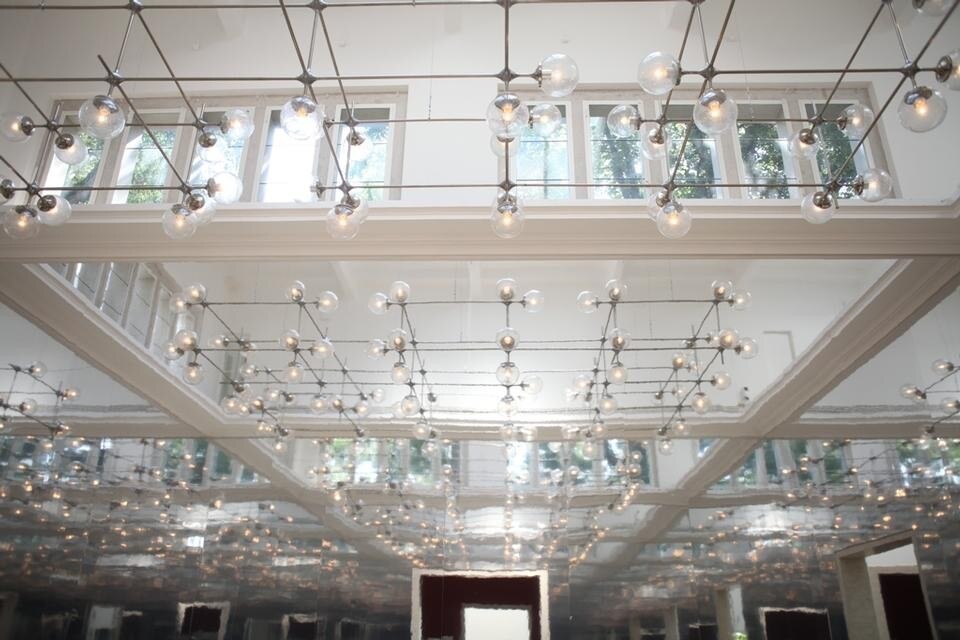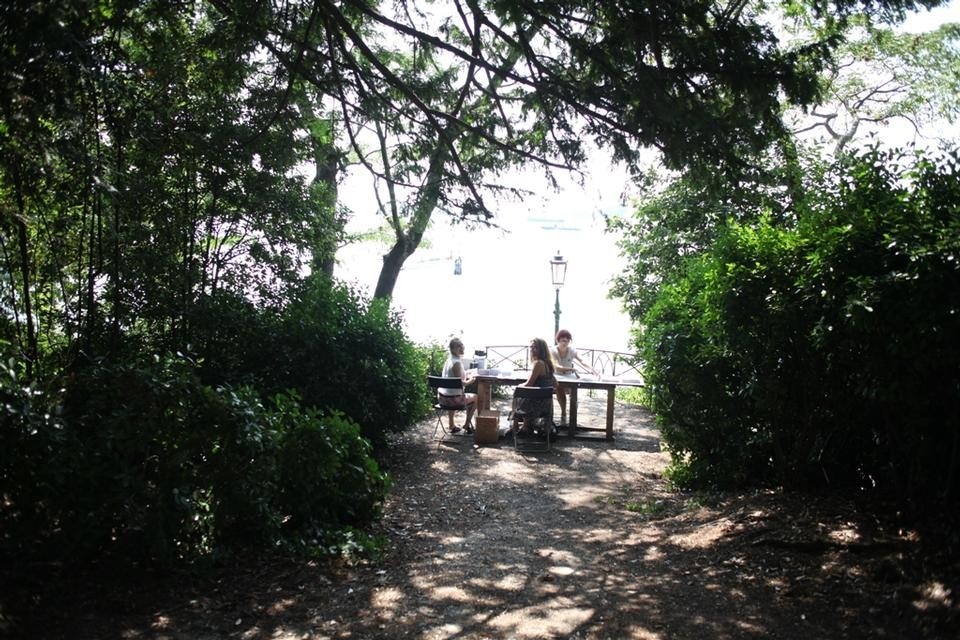To decide who will participate in the Architecture Biennale this year we have a selection procedure with jury in Germany. This time applied about 70 teams, seven of which were invited to present their concepts in the Federal Ministry of Building. From the first, our architectural office suggested the issue "longing" and apparently it was so attractive that we attained the second round. In this stage of the selection procedure our presentation probably was decisive or the other suggestions didn't attract the jury. It is up to every curator of the Architecture Biennale how intensly and with which intention they connect to German culture. In our case, our team is internationally positioned. That helps to have a look at Germany from inside and outside. Self-perception and how others perceive us are often completely different. For that reason we also invited a percentage of international architects to contribute to the subject "architectural Sehnsucht". That makes the exhibited collection even more interesting and complex.
The issue "longing" is very individual and everyone interprets it differently. By choosing the issue we wanted to break the closely architectural discourse. We like the blur of our "longing" concept. There are fields that shouldn't be defined or analyzed in a scientific way because thereby we lose some intuition, atmosphere and emotion. Just the individual interpretation clears a space in the first place. That free space comes off badly because of biased and systematic "categorisation", especially in the architecture.
What visual and spatial tools will you use to manifest this concept in Venice and are there visual links to the spaces in the German cities?
Germany in particular has a long tradition in yearning. Seen today in a desire for political unity, and last century, in the hubris of Hitler´s vision of a world empire and a Bauhaus-inspired reunion of all the arts. Further back still, there was the yearning of Goethe, Schinkel and the Romantics for a return to Arcadia. For Germany, Italy has always played a large part in these dreams.
In this exhibition SEHNSUCHT therefore, we turn away from the proxy representation of architecture in its two physically identifiable conditions, namely the design – through models, plans and renderings – and the built form – illustrated in photographs and videos. Instead SEHNSUCHT seeks to uncover the direct sensory presence of things.
The German Pavilion itself is interpreted as the first exhibit, and transformed into a multi-layered place of yearning. The idea is to create, here in the gardens of Venice – itself an object of desire – a place that inspires through its spatial and emotional design, bringing out this aspect of architecture and encouraging people to engage with it and each other.
As well as a range of installations on show in the pavilion, a selection of drawings by German architects and creatives illustrates their own personal architectural yearnings. In the style of a modern-day salon, the German Pavilion is a space for encounter and interdisciplinary reflection on individual and collective sensitivities in today´s architectural landscape.
what do you hope people will say and think when they emerge from the pavilion in Venice?
We hope that the visitors feel comfortable in our pavilion, like to stay there and enjoy it as a meeting point on the Biennale site. Therefor we consider the pavilion itself as first exhibition piece and add a new temporary layer. We charge the rooms with emotional, cosy and sensuous aspects so that they bristle with intensity. In the atmospherically staged main room, the "Red Salon" where you can find several armchairs, more than 180 architects and artists give sketchy utterance to their architectural longings. Irritation and maybe a bit of provocation play also a role in the design of the exhibition rooms because we attach high importance to the moment of surprise. To provoke this surprise effect we came up with different ideas for our exhibitions. Regarding the outlook: In our concept we also offer an exclusive look out on the lagoon.
How do you personally experience biennales? do you think they are a useful way of presenting ideas?
I personally love it to visit the Biennale in Venice and every year I look foward to it concerning the Architecture Biennale as well as the Art Biennale: I think that these exhibitions give a lot of suggestions to artists as well as all visitors and inspire them to have new ideas, especially in a international context and exchange. To lose the Architecture Biennale or even the Biennale would be a whomp for Venice and everyone of us. In spite of all medialization and virtualization the direct and physical experience is irreplacable. Everyone who had the opportunity to witness the opening days in Venice will confirm that by first-hand experience.
your topic is 'longing' does this have some bearing on the current atmosphere around german architecture at the moment? what do you think the main issues facing the profession in germany are today?
Beside the easily appraisable and comparable works of architects and engineers there is level of emotions in the creative process which thematises the atmospheric condition of the architecture. This could be denoted as an architecture of desire, wishes and longings. Nevertheless, most of all the matter of taste and sensitivity of one individual person as well as the society in its entirety guide artistic and rational decisions. Beside the history of ideas and social collaboration it is necessary to entrench a history of sensitivity, especially in field of the built nature. In Germany the contact with the new and old is the focus of the discuss. we don't want to score this dispute in our exhibition but constitute.
The exhibition entitled SEHNSUCHT in the German Pavilion at the Venice Architecture Biennale 2010 explores the emotional heart of architectural endeavour. All creative work is rooted in yearning, a feeling which drives the whole process from start to finish. Yearning is therefore a key component in our built environment. Informed by personal and shared experiences and memories, it is nonetheless focused on the future. Never resting until the ways and means have been found to still its thirst.
German Pavilion, SEHNSUCHT
Curators: Cordula Rau, Eberhard Tröger and Ole W. Fischer




